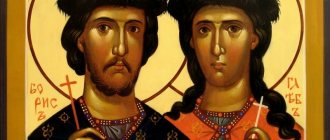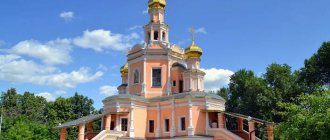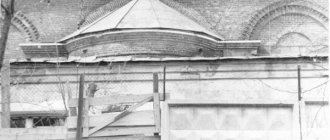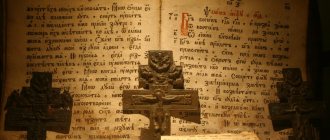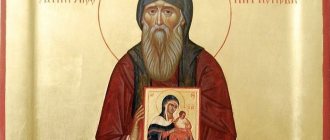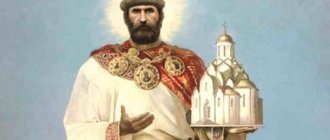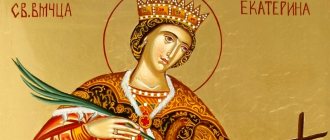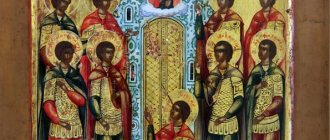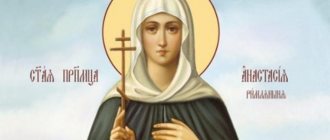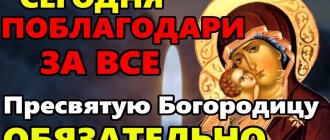In the Orthodox world, icons are a reliable talisman; the saints depicted on them help Christians to better understand the feat of faith in Christ and to be transformed into His image. Among the many holy images, there are widely revered faces, and there are those that are turned to in times of special need.
The icon of Boris and Gleb is a holy face that helps to acquire patience and righteousness through the feat of humility and acceptance of death by siblings.
Description
The icon was painted in the middle of the 14th century by Moscow masters. This is one of the first creations of Russian icon painters. Byzantine icon features can be traced in their works of that time. In the icon of the holy princes one can feel the hand of a first-class master. The icon has an unusual elongated shape. Probably written to be placed on a temple pillar.
The saints are depicted as warriors on horseback holding spears in their hands. Boris and Gleb seem to be going on a campaign to help the Moscow prince in his military affairs. The galloping horses of the saints do not tread on the ground, but soar above it. The icon painter depicts the flight of holy warriors over the earth, for they belong to the sky, but not to the firmament.
What does the Icon of Blessed Gleb help with?
Through His saintly icons, the Lord sends us what we ask for, useful for our souls. The saints, just like us, who have walked the earthly path, know our needs. They experienced the same experiences, overcame similar earthly difficulties. When we ask a saint for intercession, we ask that he convey our prayer to God and that the saint’s prayers will be heard faster than our sincere appeal to them. The icon of St. Gleb helps to establish a prayer connection with the patron saint. Having in front of us the visual image of Saint Gleb, our prayer does not dissipate into empty ideas and dreams. And according to the faith of the one who asks, the Lord, through His saints, gives us what we ask.
Before the icon of St. Gleb they pray:
— About strengthening faith — About help in organizing earthly affairs — About healing of bodily and spiritual infirmities.
Story
Princes Boris and Gleb were the first Russian saints to be canonized in 1078. What is their holiness?
Let's move mentally to the year 1015. The reign of the holy Equal-to-the-Apostles Prince Vladimir, the baptizer of Rus', is nearing the end. Christianity in Rus' is still a few years old and the morals and customs of pagan times are still strong. Brother rebels against brother, son against father. There were frequent feuds between princely families and even within the same family. Raids from neighboring peoples and nomadic tribes are disturbing the Russian land.
And then again the news came about the Pecheneg raid. Prince Vladimir, stricken by illness, sends his son Boris against them. The young prince was then a little over 20 years old. Boris was the favorite son of Prince Vladimir and it was to him that he wanted to leave the throne.
Just at the very time when Boris was on a campaign against the Pechenegs, Equal-to-the-Apostles Prince Vladimir dies in Kyiv. Vladimir’s eldest son, Svyatopolk, insidiously seizes power. He realized that Boris was dangerous for him. How to defend the power he seized? And Boris was already returning at the head of a large army.
It would seem that he could easily defeat Svyatopolk and take power (his army numbered 8 thousand people). But young Prince Boris already lives with a different understanding of life. He is a Christian, he cannot raise a hand against his brother. In prayer he gains conviction - I will not raise my hand against my brother, and even my elder one, whom I should honor as my father.
And amazingly, Boris received a warning in a dream about the death awaiting him. She introduced herself to him in the form of a terrible black beast. But he still lets the squad go. And the murderers sent by Svyatopolk carry out their dirty deed. Prince Boris was killed in his sleep, after evening prayer.
Svyatopolk decided to deceive Prince Gleb, who was in Murom at that time, to lure him to Kyiv. He hid his father's death from his brother, ordering the messengers to report:
Come quickly, your father is calling you, he is very sick.
Gleb was warned about Svyatopolk’s villainy, but still he set off to meet his death. The assassins sent dealt with the youngest son of Prince Vladimir as he sailed on a boat along the Dnieper. The prince's body was thrown between two logs and remained unfound for a long time.
A fiery sign and angelic singing showed people where the remains of the passion-bearing prince were located. The relics of the saint were found incorrupt 4 years after the villainous murder and were buried in the same grave with Boris.
The villainy did not help Svyatopolk. After a fierce struggle, he was forced to flee by Yaroslav, who arrived from Novgorod, and later received the nickname “Wise.”
How did the holiness of Boris and Gleb manifest itself? After all, it was as if they suffered not for their faith, but for the usual political strife of that time. But no. It was precisely for faith, for that new conviction for its time that the sin of crime, murder, cannot establish justice on earth.
Christ the Savior commanded:
Love your enemies, bless those who curse you, do good to those who hate you, and pray for those who abuse you.
And Boris, knowing about the impending atrocity, prays:
Grant me, O God, to accept this suffering, not from my enemies, but from my brother. Do not blame him for this, Lord.
And his younger brother, Gleb, also humbly meets his death. This was a true feat of faith. This was a manifestation of a completely new, unprecedented view of the world at that time.
Svyatopolk died a shameful death, ruined his soul and was cursed for all time with the nickname “Cursed.” This is how it was and how it will always be. The triumph of evil is a temporary appearance. Evil may triumph for a while, but it is always doomed in the face of eternity. The holy princes Gleb and Boris, in the minds of the Orthodox people, will forever remain victorious wars, bringing death to every evil deed.
Boris and Gleb
Boris and Gleb.
Wall painting of St. Isaac's Cathedral, 19th century. I.K. Dorner Boris and Gleb (baptized Roman and David; killed in 1015) are Russian princes, sons of the Kiev Grand Duke Vladimir Svyatoslavich and his wife, the Byzantine princess Anna.
In the internecine struggle that broke out in 1015 after the death of their father, they were killed by their elder brother Svyatopolk the Accursed. Boris and Gleb became the first Russian saints; they were canonized as martyrs-passion-bearers, making them intercessors of the Russian land and heavenly helpers of the Russian princes.
Some of the first monuments of ancient Russian literature are dedicated to the story of Boris and Gleb: “The Legend” of Jacob Chernorizets and “Reading” of Nestor the Chronicler. Many temples and monasteries were built in honor of the brothers.
Brothers Boris and Gleb were the younger half-brothers of Svyatopolk the Accursed and Yaroslav the Wise, they were the sons of the Kiev prince Vladimir Svyatoslavich from his wife, the Byzantine princess Anna from the Armenian dynasty, the only sister of the ruling emperor of Byzantium Vasily II the Bulgarian Slayer (976-1025), and the granddaughter of Emperor Constantine VII. Sources share the names of the brothers: Boris and Gleb - names received at birth, Roman and David - at baptism.
P.A. Vasin. Warrior in a gilded helmet. Based on materials from the 10th century.
However, the name Boris by that time had already ceased to be pagan and could be used for naming at baptism (in the 10th century, Prince Boris I, who baptized Bulgaria, was already canonized). The name Gleb refers to pagan names and is known from the story in the Joachim Chronicle about the murder of his brother Gleb by Svyatoslav Igorevich for his Christian beliefs. Around 987-989 Boris received Rostov from his father, and Gleb received Murom.
Both brothers, according to the generally accepted version, were killed by Svyatopolk the Accursed during a struggle for power.
“When the devil, the primordial enemy of all that is good in people, saw that Saint Boris had placed all his hope in God, he began to plot intrigues and, like in ancient times, Cain, who was plotting fratricide, caught Svyatopolk. He guessed the thoughts of Svyatopolk, truly the second Cain: after all, he wanted to kill all the heirs of his father in order to seize all power alone.” (The Tale of Boris and Gleb)
"The Murder of Prince Boris." Modern book illustration.
Murder of Boris
The canonical version, known both from chronicle material and from ancient Russian hagiographic legends, tells many details about the death of the brothers. In 1015, the brothers' father, Grand Duke Vladimir Svyatoslavich, fell ill, and Boris was called to Kyiv. Soon after his arrival, it became known about the Pecheneg invasion, and his father sent him with a squad to repel their raids. Boris did not meet the Pechenegs anywhere and, returning back, stopped on the Alta River. Here he learned about the death of his father and about the occupation of the grand-ducal table by his half-brother Svyatopolk. The squad offered to go to Kyiv and seize the throne, but Boris did not want to violate the sanctity of family relations and indignantly rejected this proposal, as a result of which his father’s squad left him and he was left with only his youths.
B. A. Chorikov. "The Flight of Svyatopolk." XIX century
Meanwhile, Svyatopolk, who, informing Boris about the death of his father, offered to be with him in love and increase his inheritance, wanted to kill the sons of Vladimir (he himself should be considered the son of Yaropolk, since his mother, whom Vladimir took from his brother, was at that moment she is pregnant - that’s why he is called either Vladimir’s son or nephew) to eliminate rivals for the possession of the principality.
Svyatopolk sent Putsha and the Vyshgorod boyars to kill his brother - since the sympathy of the people and squads for Boris made him a dangerous rival. Putsha and his comrades came to Alta, to Boris’s tent, on the night of July 24 (30); Having heard the singing of psalms coming from the tent, Putsha decided to wait until Boris went to bed.
As soon as Boris, doubly saddened by both the death of his father and rumors about his brother’s villainous intentions, finished his prayer and went to bed, the murderers burst in and pierced Boris and his Hungarian servant George, who was trying to protect the master with his own body, with spears.
The killers wrapped Boris, who was still breathing, in tent cloth and took him away. Svyatopolk, having learned that he was still alive, sent two Varangians to kill him, which they did, piercing him with a sword in the heart. Boris's body was secretly brought to Vyshgorod and buried there near the Church of St. Basil. Boris was about 25 years old.
Nikolai Semyonov. Pelgusius's vision of Boris and Gleb. 1889
Murder of Gleb
After the murder of Boris, Svyatopolk called Gleb to Kyiv, fearing that being with the murdered Boris not only a half-brother, but also a half-brother, he could become an avenger. When Gleb stopped near Smolensk, he received from his fourth brother, Yaroslav the Wise, news about the death of his father, about the occupation of Kyiv by Svyatopolk, about his murder of Boris and his intention to kill him, Gleb; at the same time, Yaroslav advised him not to go to Kyiv.
As the life says, when the young prince prayed with tears for his father and brother, those sent to him by Svyatopolk appeared and showed a clear intention to kill him. The youths accompanying him, according to the chronicles, became despondent, and according to the lives of the holy prince, they were forbidden to use his weapons in defense. Goryaser, who stood at the head of those sent by Svyatopolk, ordered the prince to be stabbed to death by his own cook, a jerk by birth.
The murder of Gleb occurred on September 5, 1015. The killers buried Gleb’s body “in an empty place, on a gap between two logs” (that is, in a simple coffin consisting of two hollowed out logs). E. Golubinsky believes that we are talking about the burial of the body directly at the scene of the murder on the banks of the Dnieper down from Smolensk, five miles from the city.
In 1019, when Yaroslav occupied Kyiv, on his order, Gleb’s body was found, brought to Vyshgorod and buried, along with the body of Boris, near the Church of St. Basil.
The appearance of the holy princes Boris and Gleb on the eve of the Battle of the Neva. Philip Moskvitin
In ancient Russian literature
Saints Boris and Gleb are traditional characters in literary works of the hagiographic genre, among which a special place is occupied by “The Tale of Boris and Gleb,” written in the mid-11th century in the last years of the reign of Yaroslav the Wise. Later, the “Tale” was supplemented by a description of the miracles of saints (“The Tale of Miracles”), written in 1089-1115 by three authors successively. In total, “The Tale of Boris and Gleb” has been preserved in more than 170 copies, and Iakov Chernoritsa is considered the possible author, based on the research of Metropolitan Macarius and M.P. Pogodin.
There is also a “Reading about Boris and Gleb”, written by the Venerable Nestor the Chronicler. According to a number of researchers, “Reading” was written earlier than “Tale”, created, according to their version, after 1115 on the basis of “Reading” and chronicle material.
Rev. Nestor the Chronicler. Engraving from the Patericon of 1702
Boris and Gleb are considered the first Russian saints, but the exact date of their canonization is controversial.
Metropolitan Macarius (Bulgakov) believes that the veneration of Boris and Gleb began after the construction of the first wooden church in the name of these saints in Vyshgorod in 1021 (consecrated on July 24 (30)). This was preceded by the discovery of the relics of the brothers after a fire that destroyed the Church of St. Basil, where they were buried.
The most reliable, according to researchers (E. E. Golubinsky, M. K. Karger, N. N. Ilyin, M. Kh. Aleshkovsky, A. S. Khoroshev, A. Poppe), is the canonization of Boris and Gleb, which occurred during transferring (or immediately after) their relics to a new stone church. This solemn ceremony was performed on May 20, 1072 with the participation of the children of Yaroslav the Wise, princes Izyaslav, Svyatoslav and Vsevolod, Kyiv Metropolitan George, a number of other bishops and Kyiv monasticism. At the same time, the brothers were immediately given not local, but church-wide veneration, which made them patrons of the Russian land.
There is a version of the later canonization of Boris and Gleb - on May 2, 1115, when their relics were transferred to the temple built by Prince Izyaslav Yaroslavich. This dating does not find support from researchers who point to the presence of the names of Boris and Gleb as saints in documents of the last quarter of the 11th century, the peculiarities of their hymnography and the fact of the transfer of a particle of their relics to the Czech Republic in 1094-1095.
The brothers were canonized as passion-bearers, which emphasizes their acceptance of martyrdom not at the hands of the persecutors of Christianity, but from fellow believers, and their martyrdom consisted of goodness and non-resistance to enemies. However, regarding the reason for canonization, E. Golubinsky notes that the brothers were canonized not for martyrdom, but because of the miracles attributed to their relics (he especially emphasizes that Prince Svyatoslav, also the son of Grand Duke Vladimir, killed by Svyatopolk, was not canonized because was killed and buried in the Carpathian Mountains and information about miracles from his coffin is unknown).
Ivan Bilibin “Saints Boris and Gleb on the ship”
Boris under the name Roman the Russian and Gleb under the name David the Polish are included in the list of saints of the Roman Catholic Church.
Veneration in Russia . Initially, Boris and Gleb began to be revered as miracle workers-healers, and then the Russian people and mainly the princely family began to see them as their intercessors and prayer books. In the praise of the saints contained in the “Tale”, they are called intercessors of the Russian land and heavenly helpers of the Russian princes:
Appearance of Boris and Gleb before the Battle of the Neva
Truly you are princes to princes and princes to princes, for with your help and protection our princes defeat all opponents and are proud of your help. You are our weapon, the Russian lands are protection and support, double-edged swords, with them we overthrow the insolence of the filthy and trample the devil’s machinations on earth. (The Tale of Boris and Gleb)
The chronicles are full of stories about miracles of healing that took place at their tomb (particular emphasis on the glorification of the brothers as healers was made in the oldest church service to saints, dating back to the 12th century), about victories won in their name and with their help (for example, about the victory of Rurik Rostislavich over Konchak , Alexander Nevsky over the Swedes in the Battle of Neva), about the pilgrimage of princes to their tomb (for example, Vladimir Vladimirovich, Prince of Galicia, Svyatoslav Vsevolodovich - Prince of Suzdal), etc.
Academician D. S. Likhachev Fr.
Saints Boris and Gleb. Icon from the Assumption Cathedral of the Moscow Kremlin. 1340 (Tretyakov Gallery)
Days of Remembrance: In honor of Boris and Gleb, the following celebrations were established (according to the Julian calendar): May 2 - transfer of their relics to a new church-tomb in 1115, built by Prince Izyaslav Yaroslavich in Vyshgorod. July 24 is a joint celebration of the saints. September 5 - memory of Prince Gleb. September 22 - in the Cathedral of Tula Saints. The celebration of the memory of saints on July 24 since the beginning of the 12th century has been constantly found in monthly books (Mstislav Gospel, beginning of the 12th century; Yuryev Gospel, 1119-1128; Dobrilovo Gospel, 1164 and others). Initially, the day of remembrance in the monthlies was classified as a minor holiday (saints with doxology), then it began to be celebrated as a middle one (saints with polyeleos), and from the second half of the 12th century, this day of remembrance in the monthlies began to be accompanied by the sign of a cross in a circle, which is used to mark the main post-Twelfth church churches holidays. The remaining days of memory are less common in Old Russian monthly calendars.
For the first time, all three days of remembrance are found together in the Moscow Typicon of 1610. In it, on May 2, it is supposed to commemorate the saints with polyeleos and more solemnly than the celebration of the memory of St. Athanasius of Alexandria (one of the Fathers of the Church), which falls on the same day. The charter of church services of the Kremlin Dormition Cathedral for June 2 states: “When it is inappropriate for Athanasius the Great to sing together with Boris and Gleb, then sing on the 4th day, a medium trezvon, and for Boris and Gleb a large trezvon, the good news is roared.” In modern menaions of the Russian Orthodox Church on May 2 it is indicated to perform a polyeleos service to the saints.
Palekh. Lacquer miniature. "Vision of Boris and Gleb to the warrior Pelgusius."
Construction of temples and monasteries
Construction of the Boris and Gleb Church in Vyshgorod and the transfer of the brothers’ relics to the new temple in 1115. The center of veneration for Boris and Gleb in the pre-Mongol period was the church in their honor, built in Vyshgorod in 1115. In addition to the relics, it also contained other relics associated with the brothers. Among them was the sword of Boris, taken to Vladimir in 1155 by Prince Andrei Bogolyubsky. The church was destroyed during Batu's invasion of Kyiv in 1240. At the same time, the relics of the holy brothers were lost and attempts to find them again, undertaken in 1743, 1814 and 1816, did not yield results.
Boris and Gleb Monastery in Torzhok
In the 1070s, wooden temples were also built at the sites where the brothers were killed. Soon they were replaced with stone ones: in 1117 on the Alta River (the place of Boris’s murder), and in 1145 on Smyadyn (the place of Gleb’s murder). Monasteries were already formed at wooden churches (on Alta - earlier than 1073, Borisoglebsky Monastery on Smyadyn - no later than 1138).
Boris and Gleb Church in Kideksha
In honor of the holy brothers, many churches and monasteries arose in different cities of Russia. Until the middle of the 16th century, the chronicler cites more than 20 cases of churches being built in their honor. The oldest of them include:
Boris and Gleb Cathedral in Chernigov
Boris and Gleb Cathedral in Chernigov (before 1123); Boris and Gleb Church in Kideksha near Suzdal (1152); Boris and Gleb Church in Polotsk (mid-12th century); Boris and Gleb Church in Novgorod (1167); Kolozha Church in Grodno (1180-1190). In the pre-Mongol period, in addition to monasteries at churches built on the sites of the murder of brothers, monasteries were founded: Borisoglebsky Monastery in Torzhok (1038, founded by Efrem Ugrin, who served in the retinue of one of the brothers) and Borisoglebsky Nadozerny Monastery in Pereslavl-Zalessky (closed in 1788 ).
Rostov Boris and Gleb Monastery
Veneration outside Russia
The veneration of Boris and Gleb as saints in other Orthodox countries began soon after their canonization in Rus':
in 1095, particles of the relics of the holy princes were transferred to the Czech Sazavsky monastery; at the end of the 12th century, in the Greek Prologue of Sourozh origin, under July 24, a postscript appears: τῇ αὐτῇ ἡμέρᾳ μνήμη τῶν ἁϒ[ίων] νεοφαν[έντ]ων μαρτύ ρων ἐν ῥωσικοῖς χώραις δα[υὶ]δ καὶ ῥωμανοῦ - “on this day the memory of the holy new martyrs in Russian land of David and Roman"; Anthony of Novgorod in his “Tale of the Places of Saints in Constantinople” (1200) reports on a large icon with the image of holy brothers seen in Constantinople (“At the altar on the right side... there was an icon of the great saints Boris and Gleb”) and about the church dedicated to them ( “And in the city of Ispigas there is a church of the holy martyrs Boris and Gleb: in that city the saints appeared, and many healings came from them”). Anthony also writes that local craftsmen make copies of the icon of Boris and Gleb, which are probably sold at the temple itself.
Roerich. "Boris and Gleb"
The Armenian Chetia Menaion of 1249 includes the “Tale of Boris and Gleb” under the title “The History of Saints David and Romanos” (Armenian: Պատմութիւն սրբոց Դավթի եւ Ռոմանոսի). The holiday was celebrated on July 24. The veneration of princes became especially widespread in the 13th-14th centuries in the South Slavic countries (especially in Serbia). This is due to the development of church-cultural ties between Russia and these countries through Athos and Constantinople, as well as the liberation of the Bulgarian and Serbian states from the rule of Byzantium. Days of remembrance of saints appear in South Slavic monthly books (the earliest mention in the Gospel of aprakos of the first half of the 13th century), prayers to them are placed in kondakars (the earliest example is the Serbian kondakar of the beginning of the 14th century), but the facts of the dedication of temples to these saints in Bulgaria and Serbia in the Middle Ages unknown.
Hymnography
The first hymns to Boris and Gleb appear at the end of the 11th century, the oldest of them are contained in the July menaion of the late 11th - early 12th centuries and Kondakar under the Studite Charter, written at the same time. In the 12th century, hymns to the princes included 24 stichera, 2 canons, 3 kontakia with ikos, sedalion and luminary. The composition of the chants indicates that they formed 3 services, that is, for each of the days of remembrance of the saints. According to the instructions in the menaion of the first half of the 12th century, the author of the service to the brothers is Metropolitan John of Kiev.
Despite the extensive composition of hymns to Boris and Gleb, in the pre-Mongol period they were placed only under July 24 (for the holiday of May 2, only one kontakion was given during this period). The first texts of services for May 2 appear at the end of the 14th century and are composed of previously known stichera. New stichera for this holiday appear in the 15th century and are associated with the work of Pachomius Logothetes. In the 15th-16th centuries, the mention of the murderer of the brothers, Prince Svyatopolk, disappeared from the chants.
At the turn of the 11th-12th centuries, paroemic readings to the saints appeared, which are atypical for the Byzantine rite - instead of biblical readings, prose tales about the saints were used, although called in the traditional form “Reading from Genesis.” The text of the proverbs contains allusions to passages from the Old Testament, but the basis is the teaching about love and hatred between brothers (1st proverb), the story of the murder of Boris and Gleb and the war between Yaroslav and Svyatopolk (2 and 3 proverbs). In the 17th century, these proverbs were substitutes for traditional biblical ones, included in services to martyrs.
Vision of the warrior Pelgusius. St. Boris and Gleb appear to the night guard of Alexander Nevsky.
Iconography
Nestor reports about the first fact of painting the image of the holy brothers in his “Reading about Saints Boris and Gleb” and connects this with the instructions of Yaroslav the Wise:
He commanded it to be written on the holy icon, so that the faithful people who enter the church and see the image written with it, and as they see it themselves, they worship it with faith and love and kiss the image with it. However, researchers note that the iconography of the saints was not developed until the 1070s, their images are not in the St. Sophia Cathedral in Kyiv, and seals with their images have not been preserved. Among the works of the 11th - first half of the 12th centuries, the images of Boris and Gleb were preserved on works of “small forms” (reliquary crosses, etc.), which is associated with the veneration of princes as healers and patrons of the customer of the product.
“The Tale of Boris and Gleb” (facial miniatures from Sylvester’s collection of the 14th century) 1. Boris and Gleb are awarded martyr’s crowns by Jesus Christ. 2. Boris goes against the Pechenegs
The holy brothers are usually represented on icons together, in full growth. They are depicted in princely clothes: round hats trimmed with fur, and cloaks; a martyr's cross or a cross with a sword is placed in their hands, indicating their origin and military glory. Information about Boris’s appearance was preserved in the Legend of Boris and Gleb, written no later than 1072:
He was handsome in body, tall, had a round face, broad shoulders, a thin waist, kind eyes, a cheerful face, small in age and still had a youthful mustache. There is no such information about Gleb’s appearance, and he, like his younger brother, is depicted as young, beardless, with long hair falling over his shoulders. On icons of the 15th-16th centuries, the image of saints in identical frontal poses becomes traditional; on some icons the figures are given excessive elongation in order to emphasize their external fragility. The brothers are also depicted turning slightly towards each other, depicting their conversation.
Saints Boris and Gleb. Slate icon from the Solotchinsky Monastery. 1st third of the 13th century (Ryaz XM)
In 1102, the shrines with the relics of the holy brothers, on the orders of Vladimir Monomakh, were covered with gilded silver plates. After transferring the relics to the new church, he ordered to decorate them with relief images of saints: “Having searched for silver bowls and torn and gilded the saints after them” - these images became the basis for rare single images of Boris and Gleb.
The hagiographic icons of Boris and Gleb have been known since the second half of the 14th century: in their hallmarks, icon painters emphasize the brothers’ humility and meekness, their Christian love for their neighbors, their readiness for martyrdom, and also place images of miracles attributed to them. Academician V.N. Lazarev, describing the hagiographic icon of Boris and Gleb of the Moscow school of the 14th century, writes: The strongest part of the icon is the faces of Boris and Gleb. They have a captivating kindness and gentleness. The artist sought to emphasize the idea of sacrifice, which runs like a red thread throughout “The Tale of Boris and Gleb”...
In the post-Mongol period, the late antique and Byzantine tradition of depicting saints on horses appeared in the iconography of Boris and Gleb, which arose under the influence of the images of Saints Sergius and Bacchus, George the Victorious, Demetrius of Thessalonica and others. This reveals the intercessory and military function of the cult of these saints.
There are known icons that reflect the idea of Boris and Gleb as defenders and patrons of cities (for example, an early 18th century icon painted in memory of the rescue of the city of Kargopol from a fire, attributed to the intercession of the brothers). They are characterized by the image of saints in prayer to the cloudy Savior (the image of Jesus Christ in the sky). On one of these icons of the second half of the 18th century, the brothers’ clothing is painted with cinnabar, symbolizing both the blood they shed and the scarlet robe of Christ.
The Varangians sent by Svyatopolk pierce the body of the saint with a sword. Boris. Miniature from Sylvester's collection. 2nd half XIV century (RGADA. F. 381. No. 53. L. 128)
Murderers at the Tent of St. Boris (above). The murder of the prince. St. Boris and St. Georgy Ugrin. Miniature from Sylvester's collection. 2nd half XIV century (RGADA. F. 381. No. 53. L. 125 vol.)
The killers are waiting for St. Gleba on Smyadyn (above). Murder of St. Gleba. Miniature from Sylvester's collection. 2nd half XIV century (RGADA. F.381. No. 53. L. 132 vol.)
Saints Boris and Gleb. Icon from the Zverin Monastery in Novgorod. 1335 (State Historical Museum)
Saints Boris and Gleb. Icon from the Savvino-Vishera Monastery. XIII century (KMRI)
Saints Boris and Gleb. Icon from Boris and Gleb Church. in Plotniki, Novgorod. OK. 1377 (NGOMZ)
Saints Boris and Gleb in their lives. Icon from Boris and Gleb Church. in "Zaprudy" in Kolomna. Con. XIV century (TG)
Saints Boris and Gleb and Equal to the Apostles. book Vladimir. Icon from St. Sophia Cathedral in Novgorod. Con. XV - beginning XVI century (Museum-apartment of P. D. Korin)
Saints Boris and Gleb. Icon. 1st half XVII
Saints Boris and Gleb. Icon. 1st half XVII century (PGHG)
Healing Mironega with the prayers of Saints Boris and Gleb. Miniature from Sylvester's collection. 2nd half XIV century (RGADA. F. 381. No. 53. L. 149)
Healing of a lame man at the tomb of Saints Boris and Gleb (above). Meal at the prince's Izyaslav on the occasion of the construction of a new church in the name of St. passion-bearing princes. Miniature from Sylvester's collection. 2nd half XIV century (RGADA. F.381. No. 53. L. 151)
Healing of a blind man at the tomb of St. princes. Construction of the cathedral in the name of Saints Boris and Gleb (above). Relics of St. The princes are carried to the temple. Miniature from Sylvester's collection. 2nd half XIV century (RGADA. F. 381. No. 53. L. 150)
Transfer of the relics of St. Boris to the new church (above). Transfer of the relics of St. Gleb to the new church. Miniature from Sylvester's collection. 2nd half XIV century (RGADA. F. 381. No. 53. L. 152 vol.)
St. Boris. Fragment of the icon of St. Nicholas the Wonderworker (Lipensky). 1294 Master Alexa Petrov (NGOMZ)
Saints Boris and Gleb and Equal to the Apostles. book Vladimir. Fragment of a 2-part icon from c. Dormition of the Virgin Mary in Butyrki in Pskov. 2nd half XVI century (PIAM)
Stichera to Saints Boris and Gleb. Stichirary. XII century (RNB. Soph. No. 384. L. 100 vol.)
Monument to Boris and Gleb at the walls of the Borisoglebsky Monastery in Dmitrov (2006, sculptor - A. Yu. Rukavishnikov)
Literature: Abramenko N. M. Holy princes Boris and Gleb as protectors of the Russian army in the works of the 16th–17th centuries // Current problems of theory and history of art: collection. scientific articles / Ed. S.V. Maltseva, E.Yu. Stanyukovich-Denisova. - St. Petersburg: NP-Print, 2013. - Issue. 3. - pp. 241–247. Abramovich D.I. Lives of the holy martyrs Boris and Gleb and services to them. - Pg, 1916. Boris and Gleb // Orthodox Encyclopedia. Volume VI. - M.: Church-scientific, 2003. - P. 44-60. — 752 p. — 39,000 copies. — ISBN 5-89572-010-2 Dmitriev L. A. The Legend of Boris and Gleb. — Dictionary of scribes and bookishness of Ancient Rus'. XI - first half of the XIV century. - L., 1987. - P. 398-408. Milyutenko N. I. Holy prince-martyrs Boris and Gleb. Research and texts. - St. Petersburg, 2006. - 432 p. — ISBN 5-89740-132-5. Mikheev S. M. “Svyatopolk sits in Kiev on his father’s side”: The strife of 1015-1019 in ancient Russian and Scandinavian sources. - M.: Institute of Slavic Studies of the Russian Academy of Sciences, 2009. - 292 p. Ponomarev A.I. Boris and Gleb // Orthodox Theological Encyclopedia. - 1901. - T. 2. - P. 954. The Legend of Boris and Gleb // Library of Literature of Ancient Rus' / Ed. D. S. Likhacheva, L. A. Dmitrieva, A. A. Alekseeva, N. V. Ponyrko. - St. Petersburg, 1997. - T. 1: XI-XII centuries. Tales of Saints Boris and Gleb: Sylvester's list of the 14th century / published by I. I. Sreznevsky. - St. Petersburg: Printing house of the IAN, 1860. Fedotov G. P. Boris and Gleb. — Saints of Ancient Rus'. - M.: Moscow Worker, 1991. Uzhankov A. N. Holy Passion-Bearers Boris and Gleb: on the history of canonization and writing of lives // Ancient Rus'. Questions of medieval studies. - 2000. - No. 2. - P. 28-50.; Materials from the Wikipedia website were used.
Portraits of figures in similar areas of activity:
Yaroslav the Wise, Prince of Novgorod and Grand Duke... Vsevolod Yaroslavich, Grand Duke of Kiev... Svyatopolk II Izyaslavich, Grand Duke of Kiev... Metropolitan Hilarion of Kiev... Andrei Ivanovich, Prince Staritsky... Svyatoslav II Yaroslavich, Grand Duke of Kiev... Joseph Volotsky Vseslav Bryachislavich, Prince of Polots cue... Rurik - Prince of Novgorod (862-879)... Oleg Ivanovich, Grand Duke of Ryazan... Izyaslav I Yaroslavovich, Grand Duke of Kiev... Prince Dmitry Mikhailovich Pozharsky... Oleg Svyatoslavich, Prince of Chernigov, Prince Tmutar... Prince Andrei Mikhailovich Kurbsky... Igor Olgovich, prince oh Chernigovsky...
Where is
Nowadays, the icon can be found in few churches in Russia. The icon can be found in Veliky Novgorod, in the Boris and Glebov Church. The shrine can also be found in the Kolomna Boris and Glebov Church, in the Monastery of the Nativity of the Virgin Mary Farapontov and in the Spaso-Efrosinyevsky Monastery in Polotsk.
Church of Boris and Gleb in Plotniki
